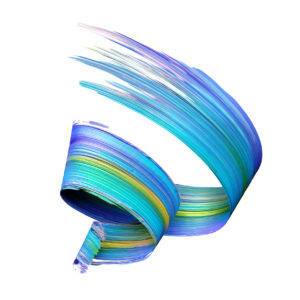
The spatial sequences that Laban presents in Part 1 of Choreutics are “rhythmic circles” – closed polygonal trace-forms that begin and end in the same spatial location. But in Part 2, Laban created open sequences that begin and end in different parts of the kinesphere.
We explored several of these open forms, notably “snakes” and “shears.”
Snakes are taken from the volutes of the A and B Scales – essentially a volute linked to the next point in the scale. They lead on in space and lend themselves to free improvisation in terms of finding a way to complete the sequence. Nevertheless, explorers gave snakes a mixed review. Some felt a “freedom of movement” while others found them “puzzling and awkward.”
Responses were less mixed on shears. These are sharply angled zigzag forms with widely spread, scissor-like openings. Theoretically, their patterns are very complex. Moreover they did not seem to be easy to embody, and in some cases, left movers feeling “tossed about, dizzy, and off balance.”
I think the jury is still out on open forms. It is entirely possible that closed forms; that is, rhythmic circles, are more satisfying to perform because they have a completeness and wholeness of form that Laban tags as one characteristic of movement harmony.
On the other hand, a lot of postmodern dance works with fragmentation as a compositional process. So there may be more to be discovered through Laban’s own explorations of Choreutic fragmentation!
